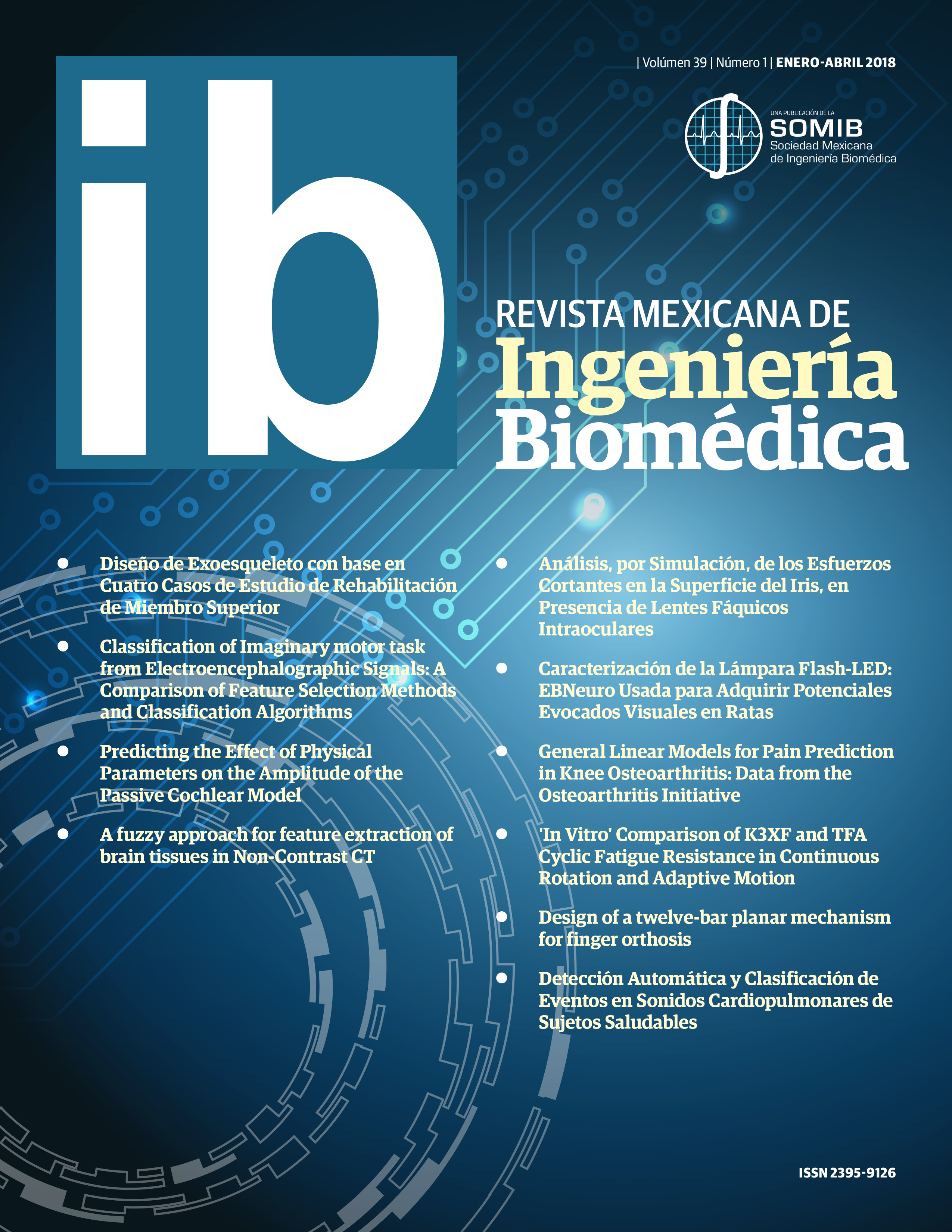Design of a twelve-bar planar mechanism for finger orthosis
DOI:
https://doi.org/10.17488/RMIB.39.1.5Keywords:
hand rehabilitation, mechanical desing, mechanisms synthesis, orthosis finger, semicircular sliderAbstract
In the last years, a considerable number of patients with hand mobility problems has been reported; in most of these cases, the patients must spend time in a specialized center to carry out a therapy to rehabilitate damaged parts. This paper presents the design of an orthosis for finger rehabilitation. The novelty of this proposal is that the design is formed by rigid links and three semicircular sliders with a center of rotation coincident with the finger joints; moreover, the synthesis of these sliders is realized in a new and simple way. The mechanism is designed to be compact enough to be used by a person during a whole day; it is formed by twelve links and allows the three finger phalanxes to be flexed simultaneously. The mechanism is coupled only to the dorsal side of the hand and has no interference when grasping objects, in such a way that the orthosis presented in this paper enables the patient to perform the Activities of Daily Living. The synthesis of the mechanism presented in this paper focuses on the middle finger, nevertheless, it is possible to use the same configuration for the others fingers only by scaling.
Downloads
Downloads
Published
How to Cite
Issue
Section
License

This work is licensed under a Creative Commons Attribution-NonCommercial 4.0 International License.
Upon acceptance of an article in the RMIB, corresponding authors will be asked to fulfill and sign the copyright and the journal publishing agreement, which will allow the RMIB authorization to publish this document in any media without limitations and without any cost. Authors may reuse parts of the paper in other documents and reproduce part or all of it for their personal use as long as a bibliographic reference is made to the RMIB. However written permission of the Publisher is required for resale or distribution outside the corresponding author institution and for all other derivative works, including compilations and translations.








